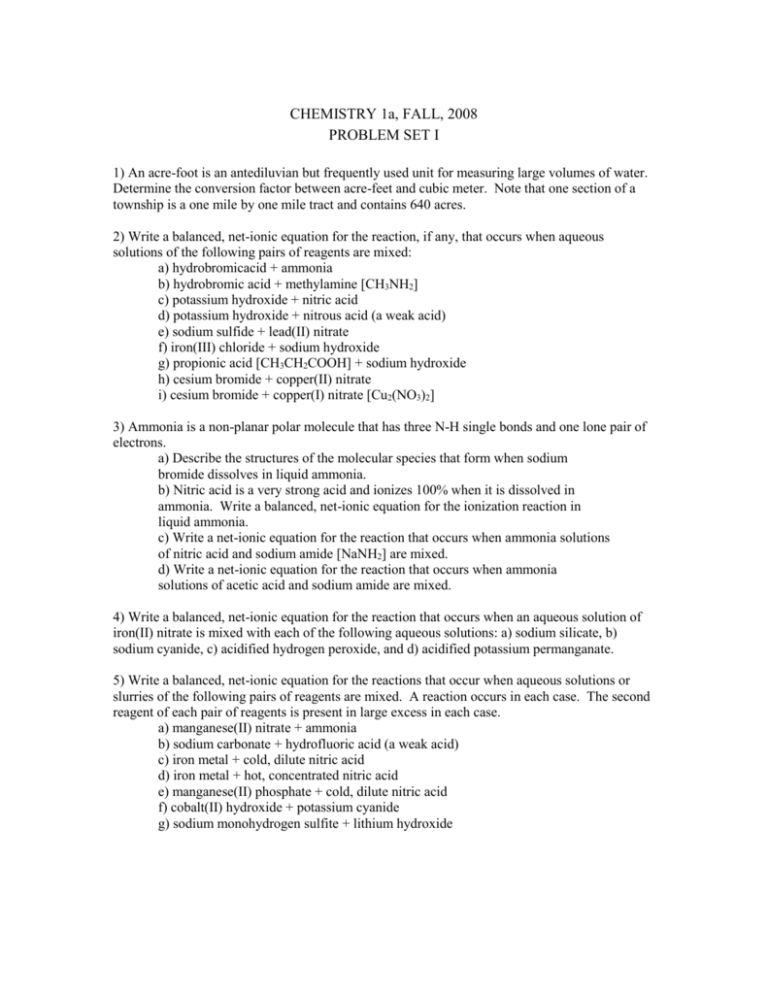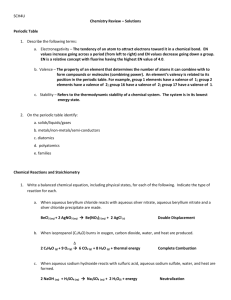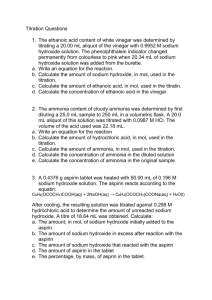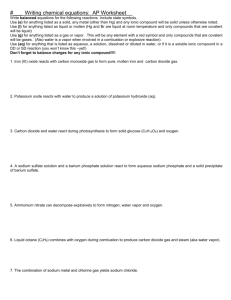Problem Set I
advertisement

CHEMISTRY 1a, FALL, 2008 PROBLEM SET I 1) An acre-foot is an antediluvian but frequently used unit for measuring large volumes of water. Determine the conversion factor between acre-feet and cubic meter. Note that one section of a township is a one mile by one mile tract and contains 640 acres. 2) Write a balanced, net-ionic equation for the reaction, if any, that occurs when aqueous solutions of the following pairs of reagents are mixed: a) hydrobromicacid + ammonia b) hydrobromic acid + methylamine [CH3NH2] c) potassium hydroxide + nitric acid d) potassium hydroxide + nitrous acid (a weak acid) e) sodium sulfide + lead(II) nitrate f) iron(III) chloride + sodium hydroxide g) propionic acid [CH3CH2COOH] + sodium hydroxide h) cesium bromide + copper(II) nitrate i) cesium bromide + copper(I) nitrate [Cu2(NO3)2] 3) Ammonia is a non-planar polar molecule that has three N-H single bonds and one lone pair of electrons. a) Describe the structures of the molecular species that form when sodium bromide dissolves in liquid ammonia. b) Nitric acid is a very strong acid and ionizes 100% when it is dissolved in ammonia. Write a balanced, net-ionic equation for the ionization reaction in liquid ammonia. c) Write a net-ionic equation for the reaction that occurs when ammonia solutions of nitric acid and sodium amide [NaNH2] are mixed. d) Write a net-ionic equation for the reaction that occurs when ammonia solutions of acetic acid and sodium amide are mixed. 4) Write a balanced, net-ionic equation for the reaction that occurs when an aqueous solution of iron(II) nitrate is mixed with each of the following aqueous solutions: a) sodium silicate, b) sodium cyanide, c) acidified hydrogen peroxide, and d) acidified potassium permanganate. 5) Write a balanced, net-ionic equation for the reactions that occur when aqueous solutions or slurries of the following pairs of reagents are mixed. A reaction occurs in each case. The second reagent of each pair of reagents is present in large excess in each case. a) manganese(II) nitrate + ammonia b) sodium carbonate + hydrofluoric acid (a weak acid) c) iron metal + cold, dilute nitric acid d) iron metal + hot, concentrated nitric acid e) manganese(II) phosphate + cold, dilute nitric acid f) cobalt(II) hydroxide + potassium cyanide g) sodium monohydrogen sulfite + lithium hydroxide




